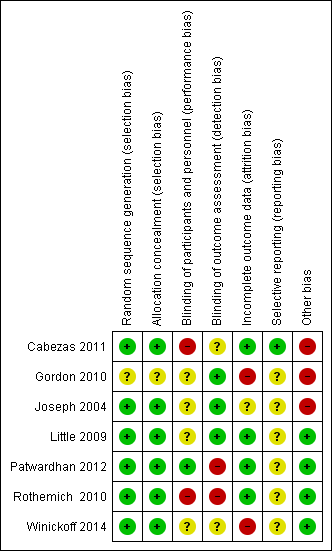Contenido relacionado
Revisiones y protocolos relacionados
Tim Lancaster, Lindsay F Stead | 31 marzo 2017
Thomas R Fanshawe, William Halliwell, Nicola Lindson, Paul Aveyard, Jonathan Livingstone‐Banks, Jamie Hartmann‐Boyce | 17 noviembre 2017
William Matkina, José M. Ordóñez‐Menaa, Jamie Hartmann‐Boyce | 2 mayo 2019
Dorie Apollonio, Rose Philipps, Lisa Bero | 23 noviembre 2016
Kate Cahill, Tim Lancaster | 26 febrero 2014
Lindsay F Stead, Priya Koilpillai, Thomas R Fanshawe, Tim Lancaster | 24 marzo 2016
Jonathan Livingstone‐Banks, José M. Ordóñez‐Mena, Jamie Hartmann‐Boyce | 9 enero 2019
Kristin V Carson‐Chahhoud, Jonathan Livingstone‐Banks, Kelsey J Sharrad, Zoe Kopsaftis, Malcolm P Brinn, Rachada To‐A‐Nan, Christine M Bond | 31 octubre 2019
Gareth J Hollands, Felix Naughton, Amanda Farley, Nicola Lindson, Paul Aveyard | 16 agosto 2019
Jamie Hartmann‐Boyce, Samantha C Chepkin, Weiyu Ye, Chris Bullen, Tim Lancaster | 31 mayo 2018
Respuestas clínicas Cochrane
Agustín Ciapponi | 28 agosto 2019




